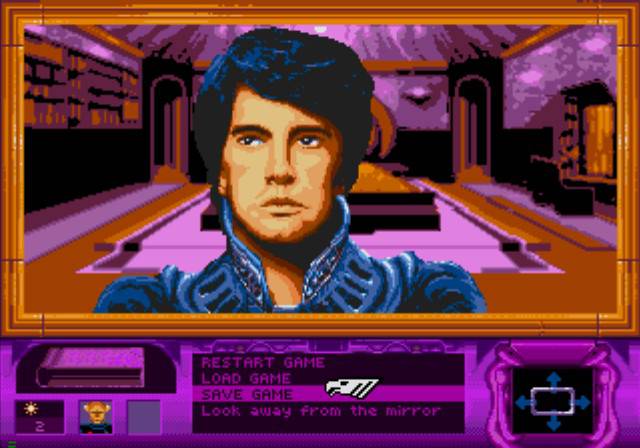

The Amiga floppy disk port is nearly identical in interface and game play to the PC version, albeit with less detailed graphics and frequent disk swapping (the game came on five disks). In 1993, it was ported to Amiga and Mega Drive/Genesis. Westwood later published a revised setup utility to enable users select a different soundcard for each type of game audio: digital speech, music, and sound effects. This limitation was frustrating to owners of high-quality MIDI synthesisers (such as the Roland Sound Canvas), because users could not play the game with both digital sound effects (which MIDI synthesisers lacked) and high-quality MIDI score. At initial release, the game's setup utility lacked the means to support separate output devices for the musical score and speech/sound-effects. The game audio was programmed with the middleware Miles audio library which handled the dynamic conversion of the game's MIDI musical score, originally composed on the Roland MT-32, to the selected soundcard. Originally released for DOS in 1992, Dune II was one of the first PC games to support the recently introduced General MIDI standard. Striking a balance between complexity and innovation, it was a huge success and laid the foundation for Command & Conquer, Warcraft, StarCraft, and many other RTS games that followed. As such, Dune II is the archetypal "real-time strategy" game. While not necessarily the first real-time strategy (RTS) video game, Dune II established the format that would be followed for years to come. It is based upon David Lynch's 1984 movie Dune, an adaptation of Frank Herbert's science fiction novel of the same name. Dune II: The Building of a Dynasty (titled Dune II: Battle for Arrakis in Europe and Dune: The Battle for Arrakis for the North American Mega Drive/Genesis port respectively) is a real-time strategy Dune video game developed by Westwood Studios and released by Virgin Games in December 1992.


 0 kommentar(er)
0 kommentar(er)
